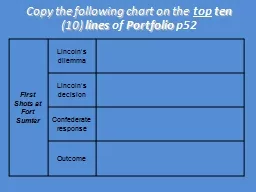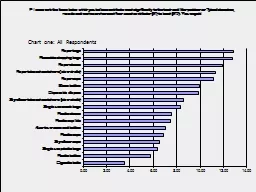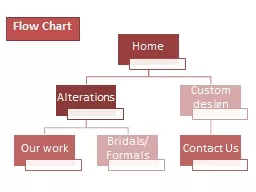PPT-Copy the following chart on the
Author : alexa-scheidler | Published Date : 2016-07-09
top ten 10 lines of Portfolio p52 First Shots at Fort Sumter Lincolns dilemma Lincolns decision Confederate response Outcome Lincoln Calls Out the Militia Northern
Presentation Embed Code
Download Presentation
Download Presentation The PPT/PDF document "Copy the following chart on the" is the property of its rightful owner. Permission is granted to download and print the materials on this website for personal, non-commercial use only, and to display it on your personal computer provided you do not modify the materials and that you retain all copyright notices contained in the materials. By downloading content from our website, you accept the terms of this agreement.
Copy the following chart on the: Transcript
Download Rules Of Document
"Copy the following chart on the"The content belongs to its owner. You may download and print it for personal use, without modification, and keep all copyright notices. By downloading, you agree to these terms.
Related Documents














